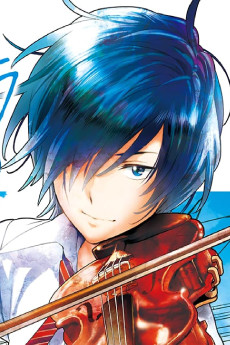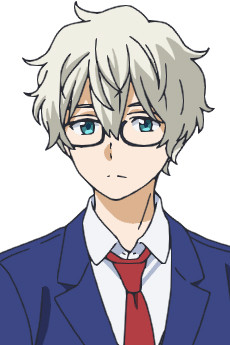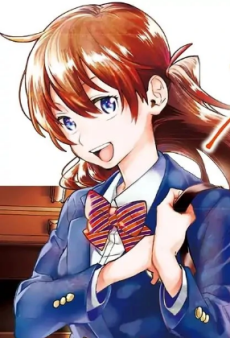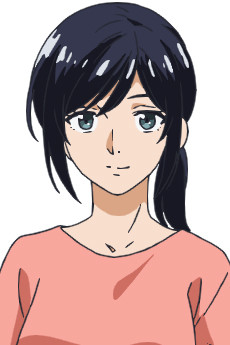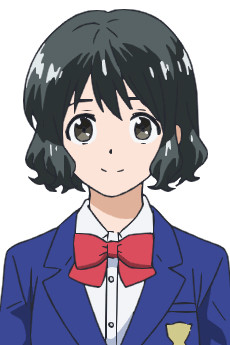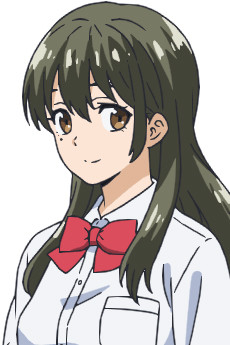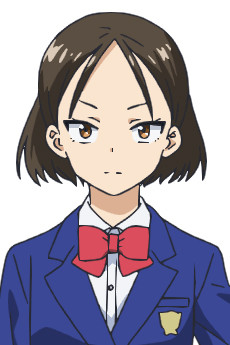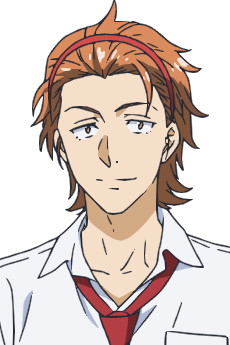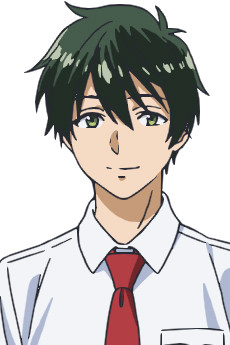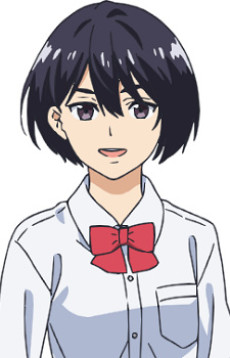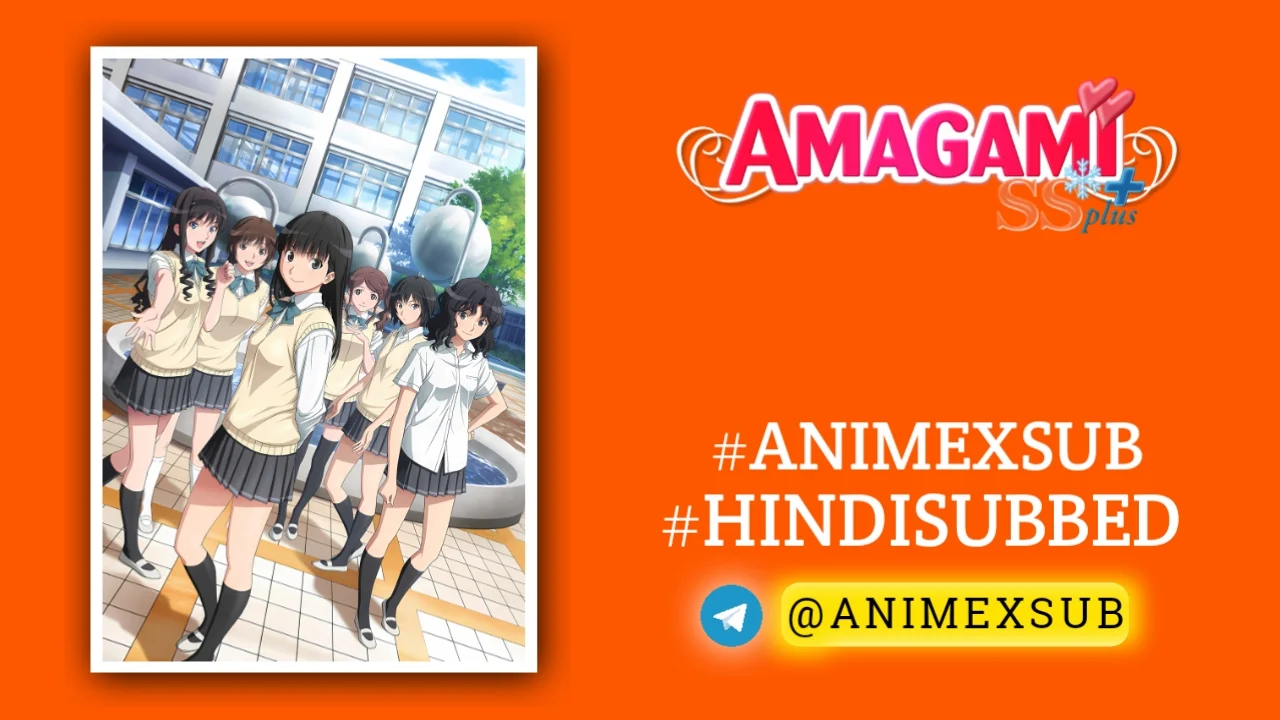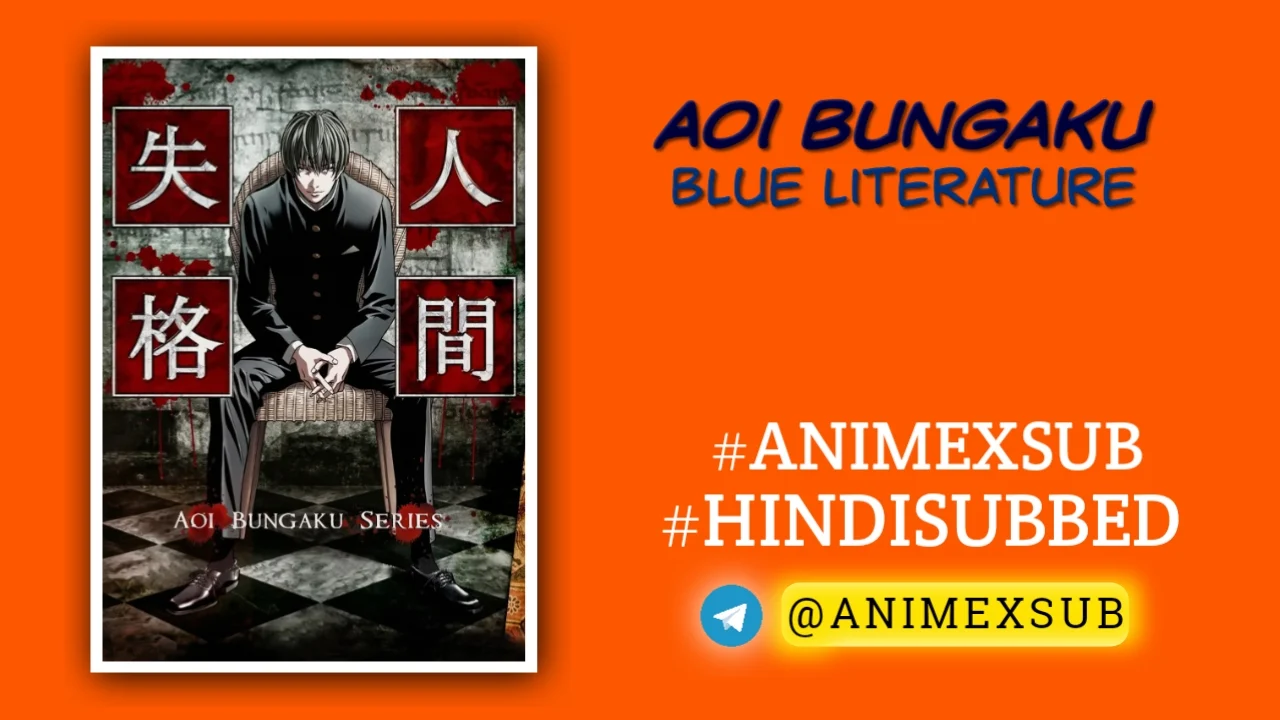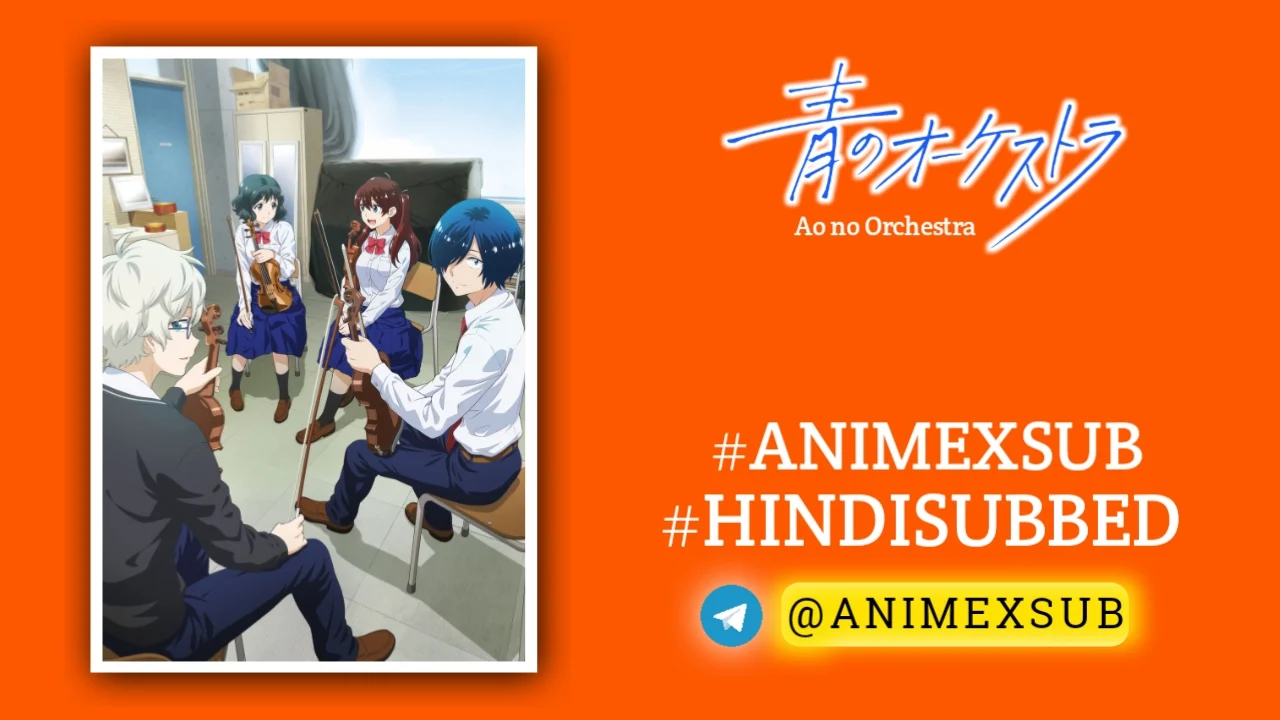
Ao no Orchestra Season 1 Hindi Subbed [24/24] | The Blue Orchestra Hindi Sub!!
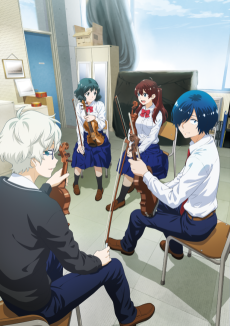
Ao no Orchestra
Synopsis
Hajime Aono was a prodigy violinist until he grew jaded with playing the violin due to personal reasons. Now in his third year of middle school, he struggles to decide his academic path. One day in school, he meets Ritsuko Akine, a hotheaded novice violinist who wants to enroll in a high school with a distinguished orchestra club. When he finds himself getting closer to Ritsuko and being brought back to the world of violinists, time starts moving again for him. This is the beginning of a youthful drama where sounds and hearts alike resound in harmony.
Watch Trailer
Characters
Ao no Orchestra Season 1: A Resonant Tapestry of Music, Emotion, and Youthful Redemption
Ao no Orchestra (Blue Orchestra), the anime adaptation of Makoto Akui’s manga, premiered in April 2023 on NHK Educational TV, delivering a 24-episode journey that redefines the music anime genre. This series, produced by Nippon Animation and directed by Seiji Kishi, is not just another tale of prodigious talent or high school dreams—it’s a profound exploration of how music can heal, connect, and transform lives. Season 1 stands out for its nuanced storytelling, authentic portrayal of orchestral music, and a cast of characters whose emotional depth resonates like a perfectly tuned violin. This review delves into what makes Ao no Orchestra a unique and powerful addition to the anime landscape, focusing on its narrative, characters, music, and technical execution, while offering fresh insights into its impact.
A Narrative That Harmonizes Pain and Passion
At its core, Ao no Orchestra follows Hajime Aono, a former violin prodigy who abandons his instrument after his parents’ bitter divorce, triggered by his father’s scandalous affair. Disillusioned and directionless in his final year of middle school, Aono’s life takes a turn when he meets Ritsuko Akine, a spirited novice violinist whose raw passion reignites his connection to music. The story unfolds as Aono, Akine, and their peers join the prestigious Umimaku High School orchestra club, navigating personal struggles, rivalries, and the collective pursuit of musical excellence.
Unlike many music anime that lean heavily on competition or romance, Ao no Orchestra strikes a unique balance by weaving a coming-of-age drama with the intricate dynamics of an orchestra. The narrative doesn’t shy away from heavy themes—family trauma, social isolation, and self-doubt—but it handles them with a delicate touch, allowing moments of levity and camaraderie to shine. For instance, Aono’s journey isn’t just about rediscovering his love for the violin; it’s about confronting the shame tied to his father’s legacy and learning to separate his identity from his past. Similarly, Akine’s arc challenges stereotypes of the “genki girl” trope, revealing her resilience in the face of rumors that paint her as a bully.
The show’s pacing is deliberate, mirroring the gradual build of an orchestral piece. Early episodes establish character motivations, while the latter half crescendos into the Umimaku orchestra’s performance of Dvořák’s Symphony No. 9 (“From the New World”). This climactic concert, spanning the final episodes, is a masterclass in storytelling, where each character’s personal growth is reflected in their contribution to the music. The series avoids a tidy resolution, leaving romantic and personal threads open for Season 2, which enhances its realism—life, like music, is a continuous work in progress.
Characters: A Symphony of Diverse Voices
Ao no Orchestra excels in its ensemble cast, where each character feels like an essential instrument in the orchestra. Aono, voiced by Shoya Chiba, is a compelling protagonist—not a brooding stereotype but a young man grappling with vulnerability and rediscovery. His internal conflict is palpable, especially in moments like Episode 2, where he plays Pachelbel’s Canon by the riverside, tears streaming as memories flood back. This scene, underscored by Ryōta Higashi’s violin performance, is a testament to the show’s ability to convey emotion through music and visuals.
Ritsuko Akine, brought to life by Ai Kakuma, is the heart of the series. Her unpolished violin skills and infectious enthusiasm make her a catalyst for change, not just for Aono but for the entire orchestra club. Her backstory—marked by social ostracism due to a misunderstood incident—adds depth, making her optimism a hard-earned trait rather than a cliché. The dynamic between Aono and Akine is refreshingly platonic, with subtle hints of potential romance that never overshadow the story’s focus on personal growth.
Supporting characters like Nao Saeki, a violin genius with a competitive edge, and Haru Kozakura, Akine’s loyal friend, enrich the narrative. Saeki, voiced by Shimba Tsuchiya, embodies the pressure of perfection, while Kozakura’s understated affection for Aono adds a layer of quiet longing. The orchestra club itself, from the retiring third-years to the quirky conductor, feels like a living entity, with each member’s story contributing to the group’s harmony. The show’s ability to give even minor characters moments of emotional clarity—like a bassist reflecting on their role in the ensemble—sets it apart from other music anime that often prioritize the leads.
Music: The Soul of the Orchestra
The true brilliance of Ao no Orchestra lies in its authentic portrayal of classical music and orchestral dynamics. Composer Akira Kosemura, alongside real-life violinists like Hilary Hahn (as Ryūji Aono) and María Dueñas (as Sō Harada), ensures that the music feels alive. The series doesn’t just use classical pieces as background; it integrates them into the narrative, with each note reflecting the characters’ emotions. For example, Aono’s audition in Episode 12, where he surprises the club with his skill, is elevated by the precise rendering of his violin’s timbre, making the moment visceral.
The show’s attention to musical detail is remarkable. From the accurate depiction of instrument postures to the seating arrangements in the orchestra, it captures the nuances of ensemble playing. Unlike some music anime that exaggerate performances for drama, Ao no Orchestra grounds its music in realism, showing the grind of rehearsals, the tension of tuning, and the joy of a perfectly synchronized chord. The final performance of Dvořák’s symphony is a standout, with the animation and sound design conveying the emotional weight of each movement. While not as polished as, say, Hibike! Euphonium, the music’s authenticity makes it accessible even to viewers unfamiliar with classical music.
Technical Execution: Beauty in Imperfection
Visually, Ao no Orchestra has its flaws, particularly in its use of CGI during orchestral scenes, which can feel jarring against the 2D character designs. Some Reddit users noted the awkwardness of these sequences, lamenting the lack of a higher-budget studio like KyoAni. Yet, the series improves post-hiatus, with character expressions and background art becoming more refined. Real-life locations, like the Chiba Prefectural Makuhari Sohgoh High School (reimagined as Umimaku), add a grounded aesthetic, making the setting feel lived-in.
The animation’s shortcomings are overshadowed by its strengths in sound design and voice acting. The voice cast, including Minako Sato as Haru Kozakura, delivers performances that capture the characters’ emotional nuances. Satoki Iida’s sound direction ensures that the music and dialogue blend seamlessly, creating an immersive experience. The background art, depicting Japanese neighborhoods and school life, adds a layer of authenticity that enhances the slice-of-life elements.
Why It Stands Out
What makes Ao no Orchestra Season 1 truly unique is its refusal to romanticize music as a cure-all. Instead, it portrays music as a mirror—reflecting pain, joy, and everything in between. The series draws parallels to Your Lie in April but carves its own path by focusing on the collective effort of an orchestra rather than individual virtuosity. It’s less about winning competitions and more about finding harmony within oneself and with others. The show’s exploration of themes like trauma, redemption, and community through the lens of youth feels fresh, avoiding the melodrama that often plagues similar stories.
Moreover, Ao no Orchestra is informative without being didactic. It introduces viewers to the world of classical music—its instruments, techniques, and emotional power—while remaining accessible. The manga’s success, with over 3.3 million copies in circulation and a 2023 Shogakukan Manga Award, underscores its cultural impact, and the anime faithfully captures its spirit.
A Lingering Resonance
Ao no Orchestra Season 1 is a triumph of storytelling and emotion, proving that music anime can transcend clichés to deliver something profound. Its characters are flawed yet relatable, its music is authentic and moving, and its narrative is a delicate balance of drama and hope. While the animation has room for improvement, the heart of the series—its focus on human connection through music—makes it a standout. As the final notes of Dvořák’s symphony fade, the announcement of a 21-episode second season in Fall 2025 leaves viewers eager for more. For fans of slice-of-life, drama, or classical music, Ao no Orchestra is a must-watch that lingers like a haunting melody.
Support Our Anime Community!
Love watching the latest anime? Help us keep uploading new episodes by join telegram channel ❤️
Join Now!